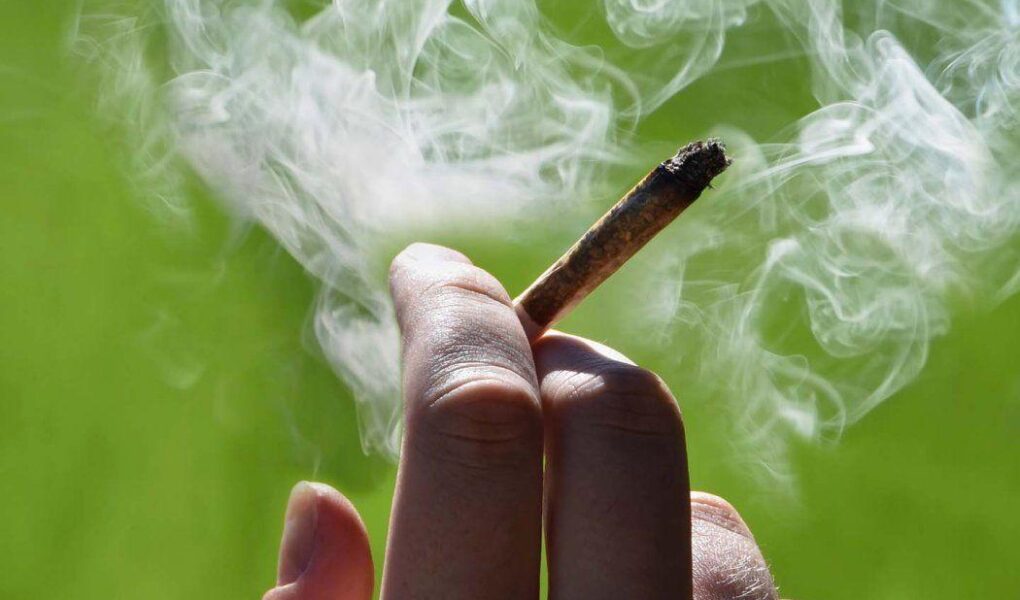Exploring the World of Marijuana: A Journey Through Its Smoke and Substance
As the sun dips below the horizon and the layers of the day begin to unwind, a familiar ritual unfolds in many corners of the world. With a flick of a lighter and the soft rustle of green leaves, the act of smoking marijuana has transcended mere consumption to become a complex tapestry woven from culture, science, and personal expression. Once relegated to the shadows of societal stigma, cannabis has emerged from its clandestine past into a realm of acceptance and exploration, sparking conversations around its benefits, implications, and the very nature of its use. With the landscape of legality shifting and public perception evolving, this article delves into the multifaceted world of smoking marijuana—examining its history, its place in modern society, and the experiences that encompass this age-old practice. Join us as we take a closer look at the highs and lows of this leafy herb, inviting readers to understand not just the act of smoking, but the broader dialogue it ignites in today’s world.
Table of Contents
- Understanding the Science Behind Marijuana: Effects on the Body and Mind
- Exploring the Different Methods of Consumption: Choosing Whats Right for You
- Navigating Legal Considerations: What You Need to Know Before You Light Up
- Fostering Responsible Use: Tips for Enjoying Marijuana Safely and Mindfully
- Q&A
- Key Takeaways
Understanding the Science Behind Marijuana: Effects on the Body and Mind
When delving into the effects of smoking marijuana, it’s essential to consider how cannabinoids interact with the body. The primary psychoactive component, tetrahydrocannabinol (THC), binds to cannabinoid receptors throughout the brain and nervous system. This interaction can lead to a wide array of effects, both mental and physical, including:
- Euphoria: A heightened sense of happiness or well-being.
- Altered Perception: Changes in vision, time, and sound perception.
- Increased Appetite: Often referred to as ”the munchies.”
- Relaxation: A calming effect that can reduce anxiety or tension.
On the flip side, smoking marijuana can also have adverse effects. Some users report experiences of paranoia, short-term memory impairment, or difficulties with coordination. The balance of these effects can vary dramatically from person to person, influenced by factors such as the strain of marijuana, frequency of use, and individual tolerance levels. To illustrate the varied effects and potential outcomes, consider the following table:
| Effect | Positive | Negative |
|---|---|---|
| Mind | Euphoria, Creativity | Paranoia, Anxiety |
| Body | Relaxation, Pain Relief | Dizziness, Impaired Coordination |
Exploring the Different Methods of Consumption: Choosing Whats Right for You
When it comes to consuming marijuana, the method you choose can significantly affect your experience. Each method has its unique advantages and drawbacks, and recognizing your personal preferences can help you make an informed decision. Smoking, for instance, is one of the oldest and most popular ways to consume cannabis. Whether you prefer joints, blunts, or pipes, the benefits of smoking include quicker onset times and a more intense flavor profile. However, it’s essential to remember that smoking can also irritate your lungs and airways, which is something to consider if you’re health-conscious.
Aside from smoking, there are various alternative methods to explore. These include vaporization, which heats the cannabis without combustion, thereby reducing harmful byproducts and providing a smoother inhale. You might also consider edibles, which offer a discreet and tasty way to enjoy marijuana, although they tend to take longer to kick in. Other options include tinctures, topicals, and dabbing—each bringing their own unique set of experiences to the table. Here’s a quick comparison of some popular methods:
| Method | Onset Time | Intensity | Health Considerations |
|---|---|---|---|
| Smoking | Immediate | High | Lung irritation |
| Vaporization | Immediate | Moderate to High | Less lung irritation |
| Edibles | 30-90 minutes | High | Longer duration effects |
| Tinctures | 15-45 minutes | Moderate | Discreet and easy |
| Dabbing | Immediate | Very High | Potent effects, caution advised |
Navigating Legal Considerations: What You Need to Know Before You Light Up
Before you decide to indulge, it’s crucial to familiarize yourself with the varying legal landscapes surrounding cannabis use. Laws differ significantly between states and countries, creating a patchwork of regulations that can be confusing. Here are some key points to consider:
- State Legislation: Check if marijuana is legalized for recreational or medical use in your state.
- Age Restrictions: Most jurisdictions enforce age limits for consumption; typically, you must be 21 or older.
- Possession Limits: Each state has different limits on the amount you can possess legally.
- Consumption Locations: Public smoking is often prohibited; familiarize yourself with local laws regarding where you can legally smoke.
Furthermore, understanding the nuances of workplace policies and public consumption is essential, as many employers maintain strict no-tolerance policies regarding marijuana use. Below is a brief overview of some common legal implications:
| Aspect | Considerations |
|---|---|
| Workplace Policies | Check if your employer has a drug-free workplace policy that may include marijuana use. |
| Driving Under Influence | Driving under the influence of marijuana is illegal and can lead to severe penalties. |
| Interstate Travel | Transporting marijuana across state lines is illegal, even if both states have legalized it. |
Fostering Responsible Use: Tips for Enjoying Marijuana Safely and Mindfully
Engaging with marijuana can be a subjective experience, and enjoying it safely requires mindfulness and awareness. Always start with a low dose to gauge your personal tolerance and be aware of the environment you’re in. Ensuring a safe and comfortable space is crucial, as it contributes to a positive experience. Here are some valuable tips to enhance your enjoyment:
- Stay Hydrated: Keep a glass of water nearby to stay hydrated and mitigate dry mouth.
- Mind Your Setting: Choose a familiar and comfortable location, preferably with trusted friends.
- Listen to Your Body: Pay attention to how you feel, and don’t hesitate to take a break if necessary.
- Avoid Mixes: Don’t combine marijuana with alcohol or other substances to prevent unpredictable effects.
Additionally, consider integrating some mindfulness practices into your experience. Being present can enhance your connection with both the cannabis and your surroundings. Techniques such as deep breathing or gentle stretching can help you center your thoughts and deepen your experience. Here’s a quick reference table of some mindfulness techniques that can complement your session:
| Technique | Description |
|---|---|
| Deep Breathing | Inhale deeply through your nose, hold for a moment, and exhale slowly. Repeat. |
| Grounding | Focus on your senses. Name five things you can see, four you can touch, etc. |
| Mindful Stretching | Gentle stretches can release tension and enhance your comfort. |
Q&A
Q&A: Understanding Marijuana Smoking
Q1: What exactly is marijuana, and how is it consumed?
A1: Marijuana, also known as cannabis, is a plant that contains psychoactive compounds primarily delta-9-tetrahydrocannabinol (THC) and cannabidiol (CBD). While it can be consumed in various forms—such as edibles, oils, or tinctures—smoking remains one of the most traditional methods. Smokers typically roll the dried flowers into joints, pack them into a bowl, or use a bong to inhale the vapor produced by burning the plant.
Q2: What are the common reasons people smoke marijuana?
A2: People smoke marijuana for a myriad of reasons. Some seek recreational enjoyment, appreciating the euphoric feelings and heightened sensory experiences it can provide. Others use it for medicinal purposes; research suggests it may help alleviate chronic pain, reduce anxiety, or improve sleep. The motivations can be as diverse as individual experiences and personal preferences.
Q3: Is smoking marijuana safe?
A3: The safety of smoking marijuana is a nuanced topic. While some users report minimal side effects, smoking—like any inhalation of combusted material—can irritate the lungs and lead to respiratory issues. Long-term use may be associated with certain risks, including dependency and cognitive effects, particularly with high-THC strains. As with any substance, moderation and informed choices are key.
Q4: How does smoking marijuana affect the brain?
A4: When smoked, THC rapidly enters the bloodstream and binds to cannabinoid receptors in the brain, which influences mood, memory, and pleasure. This interaction leads to the characteristic “high” associated with marijuana. Effects can include relaxation, altered perception, and, for some, enhanced creativity. However, it’s important to note that frequent use, especially at a young age, can impact cognitive development and may increase the risk of mental health issues.
Q5: Are there legal considerations regarding marijuana use?
A5: Legal status varies significantly around the world. In some places, marijuana is fully legal for both recreational and medicinal use, while in others it remains strictly prohibited. Even where legal, there may be regulations regarding age, amount allowed for personal use, or restrictions on where it can be consumed. Always be sure to familiarize yourself with local laws to avoid any legal repercussions.
Q6: What are some alternatives to smoking marijuana?
A6: For those concerned about the health risks associated with smoking, alternative consumption methods are increasingly popular. Vaporizers heat marijuana to release THC without combustion, which may be less harmful to the lungs. Additionally, edibles infused with cannabis, oils, and tinctures provide a smoke-free way to experience the effects of the plant. Each method offers varying onset times and intensities, so it’s worthwhile to experiment with different forms for the best personal experience.
Q7: What is the societal perception of marijuana smoking today?
A7: Societal attitudes toward marijuana have shifted dramatically over the past couple of decades. As more regions legalize its use and embrace cannabis culture, the stigma surrounding smoking marijuana is gradually diminishing. However, views can still be polarized, with some viewing it as a dangerous substance and others as a gateway to wellness and creativity. This evolution continues to shape conversations around responsible use, legalization, and public health policies.
Q8: How can I make informed decisions about smoking marijuana?
A8: Informed decision-making is about understanding both the benefits and risks. Researching strains, knowing your own health conditions, and considering your personal motivations for use are essential. If you’re new to marijuana, starting with lower doses and proceeding with caution can help gauge your individual reaction. Consulting healthcare professionals or trusted sources can also provide valuable insights into safe consumption practices.
Key Takeaways
As we draw the curtains on our exploration of marijuana smoking, it’s clear that this age-old practice is woven into the tapestry of culture, wellness, and personal experience. For some, it provides a moment of relaxation in an increasingly fast-paced world; for others, it is a source of creativity and inspiration. The ever-evolving discourse surrounding cannabis invites us to reconsider our perspectives, challenge preconceived notions, and appreciate the myriad ways it impacts individual lives.
Whether viewed through the lens of tradition, medicine, or recreation, smoking marijuana is more than just an act—it’s a ritual, a shared experience, and sometimes a pathway to enlightenment. As legality and acceptance continue to shift across the globe, understanding the nuances of this substance becomes ever more crucial.
Ultimately, the choice to smoke or not is deeply personal, shaped by a constellation of factors including health, environment, and social circles. As we part ways, may we carry with us a balanced view that respects the complexity of this topic while recognizing its potential benefits and risks. knowledge is key, and with each puff of understanding, we can contribute to a broader conversation that embraces both curiosity and responsibility.



